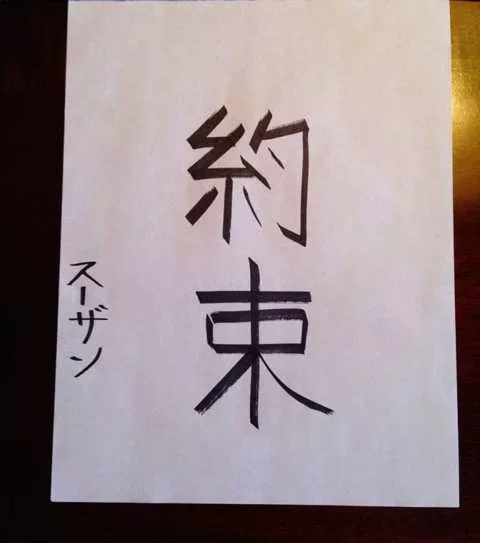Kakizome in Japan
Kakizome, a cherished tradition in Japan, translates to “first writing” but is better understood as the initiation of “first calligraphy.” Rooted in ancient customs, individuals would inscribe Chinese poetry on the second day of the year, using ink crafted from the initial water drawn from the New Year’s Day well. The compositions were adorned with words symbolizing longevity, perennial youth, and other auspicious expressions before being ceremoniously burned.
In contemporary times, the practice has evolved. Modern Kakizome involves writing a single or a couple of auspicious kanji characters (Chinese characters used in the Japanese writing system) rather than entire poems. Students often receive Kakizome assignments as part of their winter holiday homework, and professional calligraphers contribute to large-scale writing events.
Cultural Significance of Kakizome in Japan
Kakizome, deeply ingrained in Japanese culture, transcends mere writing and becomes a profound expression of tradition and symbolism. This cherished practice holds several layers of cultural significance, rooted in history and evolving with the times.
- Ceremonial Commencement of the New Year:
Kakizome marks the initiation of the new year, symbolizing a fresh beginning and the opportunity for personal and collective growth. It is a ritualistic way of stepping into the future with positivity and aspirations. - Connection to Ancient Customs:
The tradition of writing Chinese poetry during Kakizome harks back to ancient customs. The incorporation of words like “long life” and “perennial youth” reflects a desire for auspicious beginnings and a harmonious life journey. - Evolution of Calligraphy:
Kakizome serves as a platform to showcase the evolution of calligraphy in Japan. While the ancient practice involved elaborate Chinese poetry, modern Kakizome has transformed into a more concise expression, often involving a single or a few auspicious kanji characters. - Educational Significance:
Kakizome is integrated into the educational system, where students receive assignments as part of their winter holiday homework. This not only connects them with cultural traditions but also fosters an appreciation for the art of calligraphy. - Ceremonial Burning and Symbolic Renewal:
The act of ceremonially burning Kakizome compositions on January 14 holds symbolic significance. The belief that the calligrapher’s skill will improve if the wind carries the ashes high in the sky adds an element of mystique and ritualistic renewal to the practice. - Expression of Cultural Identity:
Kakizome is a cultural identifier, showcasing the unique blend of artistic expression and symbolism that characterizes Japanese traditions. It is a testament to the country’s rich cultural heritage and its ability to adapt while preserving its roots. - Promotion of Traditional Arts:
Through Kakizome, traditional Japanese calligraphy is not just practiced but celebrated. The participation of professional calligraphers in large-scale writing events further promotes and preserves this art form for future generations.
Understanding the cultural significance of Kakizome provides a glimpse into the multifaceted layers of Japanese traditions, where a simple act of writing transforms into a profound expression of cultural identity, renewal, and artistic appreciation.
FAQs:
What is Kakizome in Japan?
Kakizome, meaning “first writing” or “first calligraphy,” is a Japanese tradition where individuals write auspicious words or characters on the second day of the year.
What was the significance of writing Chinese poetry in the past during Kakizome?
In ancient times, people would write Chinese poetry during Kakizome, incorporating words like “long life” and “perennial youth” for luck. The compositions were then burned in a ceremonial fashion.
How has Kakizome evolved in modern times?
In contemporary Kakizome, individuals typically write a few auspicious kanji characters instead of entire poems. Students often receive Kakizome assignments as part of their winter holiday homework.
Is there a specific date for the burning of Kakizome compositions?
Yes, the burning of Kakizome compositions usually takes place on January 14 in a festive ceremony. It is believed that if the wind lifts the ashes high in the sky, the calligrapher’s skill will improve.
Exploring Kakizome Traditions:
Kakizome compositions, enjoyed for a few weeks and possibly graded by teachers, find their culmination in a January 14 festival where they are ceremonially burned. According to tradition, if the wind carries the ashes skyward, the calligrapher’s skill is believed to enhance.
Recommended External Links:
- Japanese Calligraphy: A Cultural Perspective – Explore the cultural significance of Japanese calligraphy.
- Japan National Tourism Organization – Festivals – Discover more about traditional festivals in Japan.

